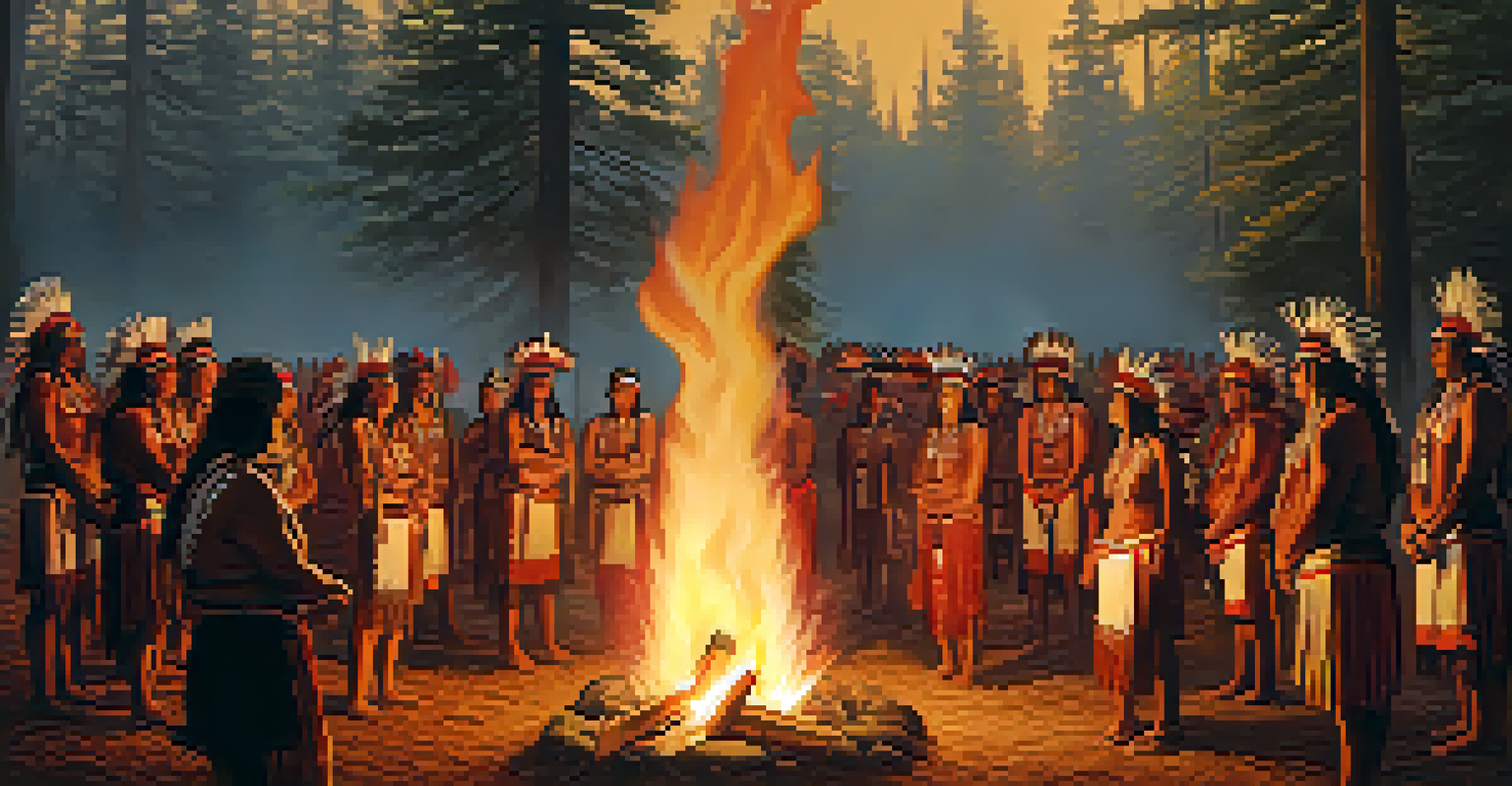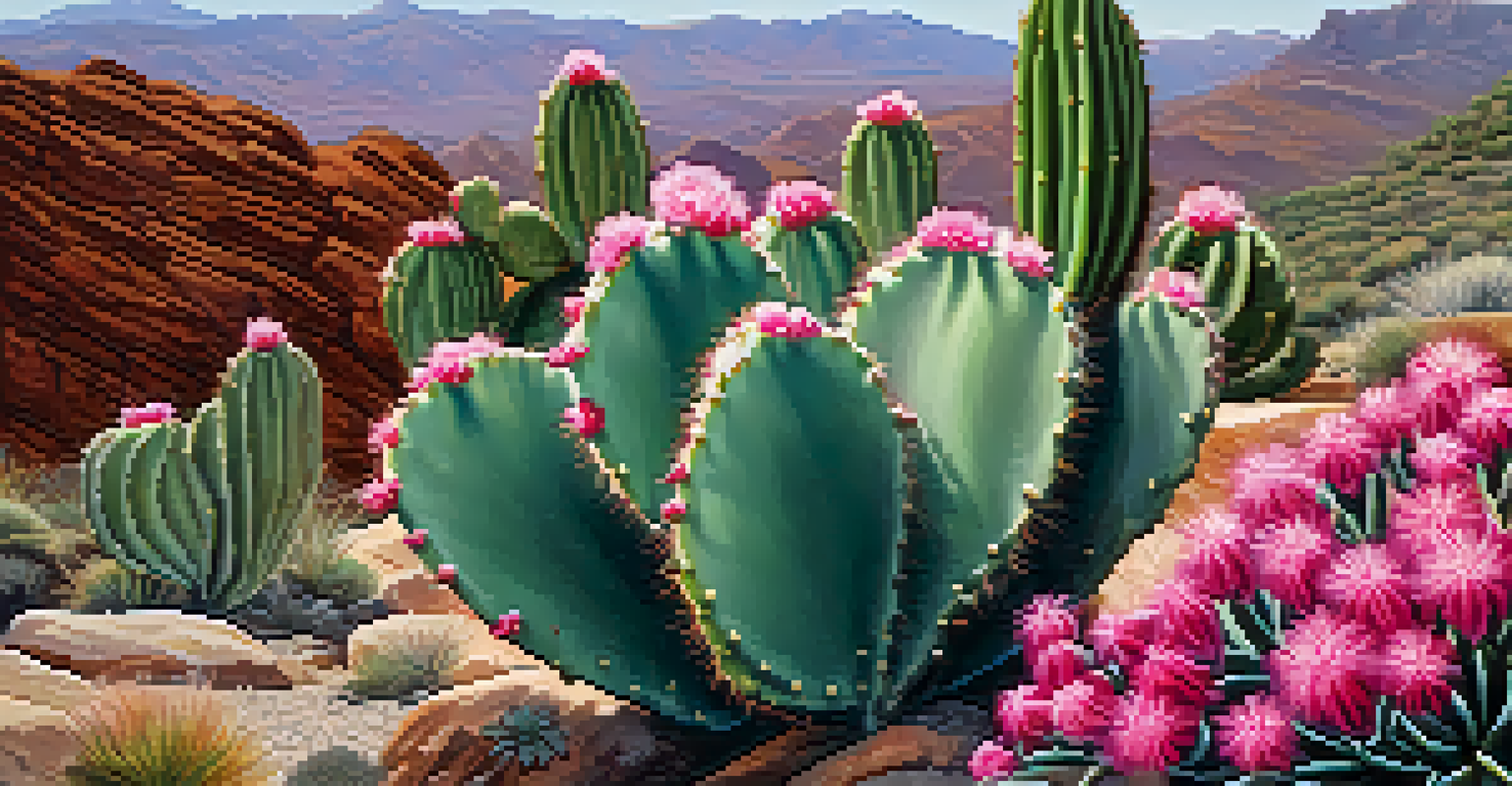Peyote, Rituals, and Healing: A Cultural Perspective

Understanding Peyote: A Sacred Cactus
Peyote, scientifically known as Lophophora williamsii, is a small, spineless cactus native to Mexico and the southwestern United States. Its psychoactive properties have made it a central figure in various indigenous cultures, particularly among Native American tribes. The cactus contains mescaline, a compound that induces altered states of consciousness, often used in spiritual contexts.
Psychedelics can help us understand the nature of consciousness, and they can help us heal, but we must respect the cultural contexts from which they come.
For many indigenous peoples, peyote is more than just a plant; it is considered a sacred gift from the Creator. The use of peyote is deeply rooted in their cultural and spiritual practices, symbolizing a connection to the divine. As such, it plays a crucial role in rituals aimed at healing, guidance, and community bonding.
The respect for peyote is evident in the way it is harvested and consumed. Traditionally, it is picked during specific lunar phases, emphasizing the connection between nature and spirituality. This approach ensures that the use of peyote is not just recreational but is interwoven with cultural significance.
Rituals Involving Peyote: A Deep Dive
Peyote is often used in ceremonial contexts, where rituals can last for several days. These ceremonies typically involve prayer, singing, and drumming, creating a communal atmosphere that fosters healing and reflection. Participants often report profound experiences that can lead to personal insights and emotional release.

One of the most well-known rituals is the Native American Church ceremony, which blends Christian elements with traditional beliefs. During these gatherings, peyote is consumed under the guidance of a leader, known as a road man, who helps facilitate the spiritual journey. This blend of traditions highlights the adaptability and resilience of indigenous cultures.
Peyote's Sacred Cultural Role
Peyote is more than a plant; it symbolizes spiritual connection and cultural identity for many indigenous tribes.
Through these rituals, peyote serves as a tool for healing, allowing individuals to confront trauma and seek guidance. Many participants describe the experience as life-changing, often leading to a renewed sense of purpose and connection to their culture. This transformative power of peyote underscores its importance in the spiritual landscape of indigenous peoples.
The Healing Properties of Peyote
The healing aspects of peyote extend beyond the physical realm, delving deep into the emotional and spiritual layers of an individual. Many users report experiencing a release of pent-up emotions, which can lead to psychological healing. This therapeutic potential has attracted the attention of researchers and mental health professionals alike.
To truly honor the gifts of nature, we must understand their cultural significance and the traditions that surround them.
Studies have shown that mescaline, the active compound in peyote, may help alleviate symptoms of depression and anxiety. It appears to promote neuroplasticity, allowing the brain to form new connections and pathways. This scientific backing adds a layer of credibility to the traditional practices surrounding peyote use.
Moreover, the communal aspect of peyote rituals fosters social support, which is crucial for healing. Participants often share their experiences and insights, creating a network of understanding and empathy. This sense of community is invaluable, especially for those dealing with personal struggles, highlighting the integrative nature of healing in these cultural practices.
Cultural Significance of Peyote in Native American Societies
Peyote holds a prominent place in the cultural identity of many Native American tribes. It is often seen as a symbol of resilience, representing the ability of these communities to maintain their traditions despite historical challenges. The practice of peyote use embodies a rich tapestry of beliefs, values, and stories passed down through generations.
For many tribes, the peyote ceremony is not just a means of healing but also a way to reinforce cultural ties. It serves as a reminder of their history, spirituality, and connection to the land. This deep-rooted significance makes the rituals surrounding peyote essential to preserving their cultural heritage.
Healing Through Peyote Rituals
The ceremonial use of peyote facilitates emotional healing and community bonding, offering profound personal insights.
The cultural significance is further emphasized by the legal battles surrounding peyote use in the United States. Native American tribes have fought for their right to use peyote in religious ceremonies, highlighting the ongoing struggle for cultural recognition and respect. This fight is a testament to the cactus's role as a symbol of cultural identity and continuity.
The Modern Perspective on Peyote Use
In recent years, there has been a growing interest in the use of peyote beyond indigenous communities. As mental health awareness rises, more people are exploring alternative therapies, including psychedelics like mescaline. This trend has sparked discussions about the ethical implications of using peyote outside its traditional context.
While some advocate for the therapeutic benefits of peyote, others caution against cultural appropriation. It’s crucial to recognize the sacred nature of peyote in indigenous cultures and to approach its use with respect and understanding. Engaging with these traditions should involve learning from the communities that have used it for centuries.
Moreover, sustainability is a pressing concern as the demand for peyote increases. Overharvesting threatens the cactus population, which could impact the very communities that rely on it for their spiritual practices. This highlights the need for responsible sourcing and consideration of the ecological balance.
Legal Status of Peyote in Contemporary Society
The legal status of peyote varies widely across different regions, reflecting a complex interplay of cultural, religious, and legal considerations. In the United States, the American Indian Religious Freedom Act allows registered tribes to use peyote in their ceremonies. However, this legal protection does not extend to non-indigenous individuals, creating a unique legal landscape.
In contrast, outside of the United States, peyote's legal status is often vague or restrictive, limiting research and exploration of its benefits. This inconsistency can hinder efforts to understand and appreciate the potential therapeutic uses of peyote. Advocates argue for more inclusive policies that respect both indigenous practices and scientific research.
Legal and Ethical Considerations
The legal status of peyote raises important questions about cultural appropriation and the sustainability of its use.
As conversations around mental health and alternative therapies continue to evolve, the legal discourse surrounding peyote is likely to change. This evolving framework presents both challenges and opportunities for indigenous communities and advocates seeking to protect their rights and traditions.
Conclusion: Respecting Cultural Traditions and Future Perspectives
In conclusion, peyote stands as a powerful symbol of cultural heritage, spiritual healing, and community bonding among indigenous peoples. Its significance transcends mere psychoactive experiences; it embodies a connection to history, identity, and the natural world. Recognizing this importance is essential for fostering respectful dialogue around its use.
As interest in psychedelics grows, it is vital to approach peyote with the reverence it deserves. This includes supporting indigenous rights and ensuring that their voices are central in discussions about peyote’s future. By honoring these traditions, we can pave the way for a more inclusive understanding of healing practices.

Ultimately, the journey with peyote is about more than just the individual; it’s about community, culture, and continuity. As we explore the complexities of peyote, it serves as a reminder of the rich tapestry of human experience and the need to respect and preserve the traditions that shape our world.